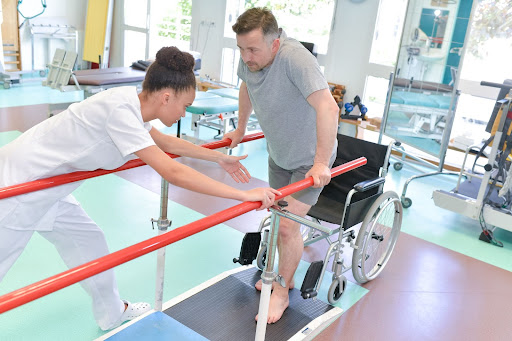
Highlights
- Physical therapy documentation is crucial for successful patient care and billing processes.
- The key to success is adhering to best practices such as documenting all relevant therapeutic activities, cutting irrelevant information, justifying treatments rendered, starting documentation during patient sessions, and using shortcuts to save time.
- Practice management software with built-in CPT and ICD-10 codes and claim scrubbing features can ensure accurate and easy-to-understand notes.
- We provide real-world case studies as examples of how to apply coding concepts in practice, including choosing between different CPT codes based on the patient’s needs and situation.
Physical therapy documentation can be daunting, but it’s an essential skill for successful patient care and smooth billing processes. By following best practices, you can ensure your documentation is efficient and compliant, ultimately enhancing your practice’s overall performance.
Let’s explore the key aspects of effective physical therapy documentation, from capturing relevant therapeutic activities and cutting irrelevant information to leveraging time-saving shortcuts and diving into real-world case studies.
Best Practices for Documentation

Physical therapy documentation can be both efficient and compliant with regulations when you adhere to a few best practices. The following tips can help you determine the most effective physical therapy documentation for your practice.
Document All Your Relevant Therapeutic Activities
Documenting all therapeutic activities as soon as possible after a patient’s visit helps prevent forgetting important information that may be crucial when submitting a claim. It also ensures that the patient’s medical record is up to date with their treatment plan.
Avoid using general terms like “therapeutic activities” or “therapeutic exercises” when documenting physical therapy activities. Instead, include specifics such as the billing code, the body parts treated, the targeted muscles and joints, and the type of exercise performed, such as isometrics.
Cut Any Irrelevant Information in Your Notes
Physical therapy documentation should only include details related to patient care and should not include extraneous or non-medically relevant information. Payers rely on this documentation to understand how the patient was treated, so keep it concise and accurate.
Use bullet points or lists in a logical and organized flow to help you remember what was discussed during the session. Always use common terminology and concepts in your notes so that coders and billers can easily understand them.
Justify Treatments Rendered

Payers may deny reimbursement if your notes include only vague phrases like “Patient tolerated treatment well.” They may deny a claim if they see notes such as seeing a patient three times a week without significant health improvements.
To support your claims, avoid abbreviations and explain in detail why you provided a service or continued care with relevant functional gains that justify continued skilled care.
For example, if you’re helping a patient with a recent knee replacement, you could state, “While working with the patient, several verbal cues were needed to ensure proper placement and sequencing of the walker. Additional gait training will be necessary to promote safe ambulation and comply with the recommended protocol for total knee replacement.”
Start Documenting During Your Patients’ Sessions
Physical therapists believe that taking notes during patient sessions can affect the quality of their care. However, this can lead to spending several hours on documentation outside of office hours.
It is crucial to communicate during therapy sessions to find a balance between taking notes and being present with your patients. Explain to them that you may take notes during their sessions to justify their treatments to insurance companies, track their progress, and stay focused on their treatment plans.
Use Shortcuts to Save Time
You may use abbreviations and shorthand, such as PT for “physical therapist” and Pt. for “patient” in your patient notes. However, it’s important to remember that not everyone reading your notes will understand your abbreviations, which can lead to confusion and errors.
Use practice management software that includes built-in CPT and ICD-10 codes and claim scrubbing features to ensure your notes are accurate and easy to understand. It can help you ensure that your coding is correct and that you’re billing for the right services.
Physical Therapy Case Studies and Examples
Documentation is essential to accurate coding; however, applying codes to real-world scenarios presents challenges beyond simply reading code descriptions. These physical therapy case studies can help you better understand how to use coding concepts in practice and allow you to choose the most appropriate codes.
Initial Patient Visit
A woman suffered an ACL tear during a skiing accident. She opts for conservative management and is referred to a physical therapist for non-surgical treatment.
During the 30-minute visit, the physical therapist assesses the patient’s medical history, performs standardized tests to assess multiple body systems, and considers the patient’s personal characteristics.
When reviewing the coding options, there may be two choices:
- The CPT code for 97161 for a low-complexity physical therapy evaluation that typically takes about 20 minutes of face-to-face time with the patient.
- The CPT code for 97162 for a moderate physical therapy evaluation that lasts for 30 minutes.
In this case, the total time spent meets the criteria for CPT code 97162. Also, the therapist looked at the patient’s medical history, which includes one to two factors that affect her plan, and the results of standardized tests addressing three or more elements from the patient’s body systems, limitations, and participation restrictions.
Subsequent Evaluation
A male patient underwent a total hip replacement and is receiving physical therapy services. Despite making progress, he still experiences persistent hip pain and limited mobility, which limit his ability to perform daily tasks.
The physical therapist determines that a re-evaluation is necessary to assess his progress and make necessary changes to his care plan. They record the patient’s current condition and compare it to the patient’s initial evaluation. Then, the therapist conducts tests and measurements to determine whether the patient has achieved his treatment goals.
The therapist documents new findings, progress, goals, and patient status changes to determine the need for continued therapy. Then, they modify the treatment plan and set new goals to address pain and mobility issues.
The CPT code 97164 for physical therapy re-evaluation is appropriate based on the new clinical findings and significant changes in the patient’s condition. The therapist uses this code to bill for the reevaluation, as it meets Medicare coverage guidelines.
Choosing Between 97140 and 97124

A physical therapist is treating a patient diagnosed with lymphedema of the arm. During each treatment session, the therapist performs therapeutic massage techniques to improve the patient’s overall circulation and help alleviate pain. The therapist also uses manual therapy techniques with the patient to improve joint mobility and reduce pain.
Due to the mutual exclusivity of CPT codes 97124 and 97140, the therapist cannot bill for both codes during the same treatment session. They must choose which code to bill for based on the services provided and the patient’s needs:
- CPT 97124 is a massage therapy code covering various techniques for one or more body areas for each 15-minute session. It is necessary to provide documentation that supports the need for continued massage beyond six to eight visits, including objective and subjective findings.
- CPT code 97140 covers manual therapy techniques like mobilization, manipulation, manual lymphatic drainage, and manual traction for every 15-minute session. The therapy involves intensive treatment followed by an exercise program, and the responsibility of care is eventually transferred to the patient or caregiver.
The physical therapist decides to continue with manual therapy using CPT code 97140, as the goal of treatment is to reduce lymphedema and manual therapy techniques are more targeted and intensive. The therapist plans to use a combination of manual decongestive therapy and serial compression bandaging, followed by an exercise program to maintain the reduction of the extremity after therapy is complete.
Final Thoughts on Physical Therapy Coding
Effective documentation is critical in physical therapy for successful patient care and billing processes. By following best practices and using shortcuts, therapists can ensure that their documentation is efficient, compliant, and easy to understand. Master the art of documentation, and you’ll maintain up-to-date medical records and enhance the overall quality of the care you provide to your patients.

Let Us Show You












